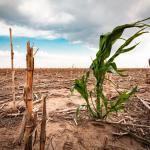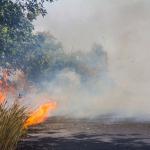Protecting Our Lands: Essential Bush Fire Prevention Tips
Bush fires, or wildfires, are fast-spreading fires fueled by dry vegetation, often worsened by prolonged droughts. These fires can devastate farmlands, destroy homes, and damage ecosystems. With climate changes increasing fire risks, prevention and management are more vital than ever.
Key Prevention Steps for Farmers
- Avoid Burning Waste: Compost or mulch crop residues instead of burning them.
- Proper Disposal: Avoid discarding lit cigarettes or matches near dry vegetation.
- Clear Vegetation: Remove dry grass and leaves around homes and farms.
- Store Flammable Materials Safely: Keep fuels and chemicals in secure, fire-resistant spaces.
Property Protection and Firebreaks
- Create Firebreaks: Clear land strips or plant fire-resistant trees like neem to slow fires.
- Build Windbreaks: Plant fire-resistant trees to reduce wind speed and spread.
- Use Fire-Resistant Crops: Plant moisture-rich crops like aloe vera as natural barriers.
Preparedness and Community Action
- Early Detection: Report signs of smoke immediately to the Jamaica Fire Brigade.
- Community Awareness: Conduct public fire safety education and land management training.
- Emergency Plans: Keep evacuation routes, contacts, and firefighting tools ready.
Response During a Fire
- Stay Upwind: Avoid smoke and flames by moving against the wind.
- Contain Small Fires: Use water, soil, or wet cloths to stop minor fires.
- Alert Authorities: Notify neighbors and emergency services promptly.
Conclusion
Preventing bush fires requires joint efforts from farmers, communities, and the government. Through smart land management, quick response, and public awareness, we can protect lives, livelihoods, and the environment.



